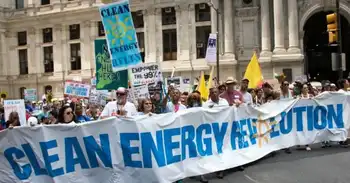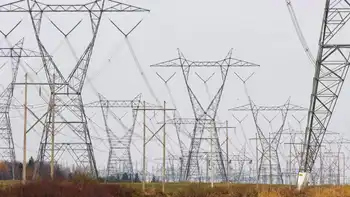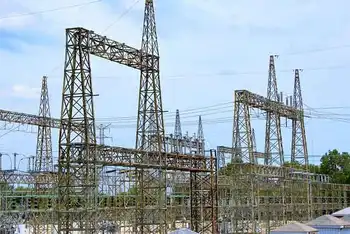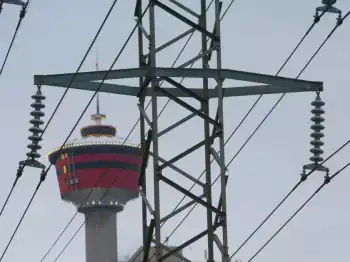Wind power on smaller scale carries potential
By SanLuisObispo.com
Protective Relay Training - Basic
Our customized live online or in‑person group training can be delivered to your staff at your location.

- Live Online
- 12 hours Instructor-led
- Group Training Available
The fifth-grader at Starside Elementary School in De Soto, Kan., has an interest in the environment, including helping to recycle much of her family's trash. But she has bigger plans, inspired by her school's recent installation of a turbine.
"When I grow up, I want to live off the grid," she said.
Much of the attention given to wind energy is for large utility-scale wind farms full of huge, three-blade generators. That's where most wind power is likely to be generated.
But the idea of producing wind energy just for a home, business or small town continues to fire the imagination of those seeking self-sufficiency.
Small wind turbines have blades from 12 to 56 feet in diameter. One popular model for smaller homes has 12-foot blades, which can produce about 30 percent of the home's power.
Small-scale wind projects accounted for less than 1 percent of installed wind capacity in 2009. But the concept has plenty of supporters who believe small turbines can provide an important supplement to utility-provided electricity.
Small projects can face big obstacles, and progress has been much slower than many hoped. Initial costs can be daunting and take more than 15 years for a homeowner to recover.
Turbines need more maintenance than some other types of renewable energy, such as solar panels. And the trees and buildings in urban areas like Kansas City, Mo., mean that a standard-style turbine, to take full advantage of the wind, could need a tower more than 100 feet tall, increasing costs and possibly violating zoning laws.
The turbines also can be noisy, another strike against them in urban neighborhoods.
August Huber III, CEO of commercial building company A.L. Huber, said small turbines eventually would find their place. He has installed a wind turbine at his company's Overland Park, Kan., offices.
The turbine, which uses scoops instead of blades to gather the wind, is designed for slower wind speeds in urban areas and is quieter than a traditional small turbine.
Similarly, DST Realty, a major Kansas City real estate developer, is planning a demonstration project at 18th Street and Broadway that will have two turbines designed for urban areas. A traditional turbine has a horizontal generating axis, designed for stronger winds. But the DST project's turbines each will have a vertical axis.
As to how well they will work, DST Realty Vice President Steve Taylor said, "We'll see."
Prospects look brighter in more sparsely populated areas.
August Spencer and his wife, a retired couple who live in eastern Jackson County, Kan., bought a traditional small turbine more than a year ago. The Spencers had enough land to put their turbine on a 45-foot-tall tower, which should give the average eight- to 14-mile-an-hour winds needed to be efficient.
"It can be real good like today, when I'm receiving 20-mile winds," Spencer said recently.
That experience can be replicated, said the experts, if you want to make the investment and do your homework.
Susan Brown is manager of business development for the Energy Savings Store in Lenexa, Kan., which sells solar collectors and wind turbines. Brown, who once helped lead opposition to the coal-fired plant that KCP&L is now building near Weston, has a wind turbine at her home north of Platte City, Mo. She said the benefits go beyond the economic.
"Every kilowatt I'm producing, I'm not giving asthma to a child," she said.
But she discourages many with an initial interest in buying a wind turbine. Despite the Midwest's wind resources, a turbine can be a worse buy than a solar-energy system, depending on location and on tax credits and other incentives.
An installed 2.4-kilowatt wind system for an average residence can cost about $20,000 and supply about a third of the home's demand for electricity. Despite a 30 percent federal tax credit, Brown figures repaying the cost would take roughly 16 years.
That can make it competitive with a solar-energy system, which also qualifies for the federal tax credit. But solar gets the edge when Kansas City Power & Light's solar rebate is included. This can knock 20 to 25 percent more off the price. Check your city's utilities to see if they offer additional rebates.
"We usually don't recommend wind turbines for Kansas City," Brown said.
However, a growing number of schools are showing interest in turbines, although producing power often is a secondary reason. The Starside Elementary turbine in De Soto will recharge batteries and run an electric train, but its main purpose is teaching students about renewable energy. Students asked for the turbine and helped raise money for it.
"We worked long and hard for these things, and the kids are really proud of it," said Paula Henderson, a counselor at the school.
Kansas City Kansas Community College is slightly more ambitious, with a wind turbine that can produce about $100 worth of electricity in four days. It also is used to train students who want jobs repairing wind turbines.
The potential of small wind is clearer in places like Beloit, Kan., northwest of Salina, Kan., and in the heart of wind country. This is where All Things Exterior - which sells siding, roofing and windows - has invested in its own turbine.
By taking advantage of the brisk wind and the renewable-energy tax credits, along with depreciation rules that reduce the price for businesses, the company expects a payback in seven to eight years, said Troy Odle, the company's account manager.
All Things Exterior believes there is enough of a market for small turbines that it is planning to sell them.
"It's not because we want to be tree huggers, but it's the right thing for America," Odle said.
Small-town America, in fact, has had success with smaller wind projects.
Rock Port, Mo., and Greensburg, Kan., don't own turbines, but they do get electricity from wind-generation projects developed for them. The Greensburg project produces enough power for 4,000 homes.
The projects were developed or financed by John Deere Wind Energy, which had been a major developer of wind energy for small towns but recently announced it was getting out of the business. The John Deere subsidiary, which has offices in Johnston, Iowa, declined to reveal what was behind the decision.
Interested small towns could buy and operate wind turbines on their own. This has been done across the country, including once in Kansas with mixed results.
Jetmore, north of Dodge City in western Kansas, had $250,000 gathering little interest in a bank account and decided to buy two reconditioned turbines to provide some power to town residents.
They began operating last year, but after a few months the blades fell off one turbine, which more recently has had vibration problems. The company that sold the turbines is making repairs, but the town no longer expects a payback in seven to 10 years.
"We found out why no one else had done one of these," said Lea Ann Seiler, director of economic development for Jetmore. "But I still think it was worthwhile."
What could be the future is companies like BTI Wind Energy in Greensburg, the Kansas town that was destroyed by a tornado in 2007. The community is emphasizing the use of renewable energy as it rebuilds.
Brad Estes and his family had the town's John Deere dealership, and they decided to buy a wind turbine as they rebuilt. That experience led them to start BTI, which sells turbines and aims to help others get into wind energy.
BTI now extends into several states, offering help to homeowners, businesses and schools.
"In the wide open spaces of Kansas, we should be able to do this all day long," Estes said.
How small-scale wind energy stacks up in the Midwest:
- Strength: Consistently strong wind in many rural and semi-rural areas.
- Drawbacks: Buildings and trees make wind less efficient in urban areas. Wind systems can be relatively high maintenance. Connecting to the grid to sell back any excess power can be tricky.
- Cost considerations: A homeowner could need more than 15 years to recoup a system's initial costs. But a 30 percent federal tax credit helps, and depreciation provisions help businesses further. Stable institutions such as schools also can get long-term financing to spread out the costs.
- Short-term potential: Limited in cities, but alternate turbines designed for urban areas are being tested.
- Long-term potential: Better in rural areas.











